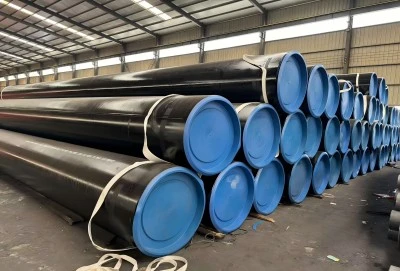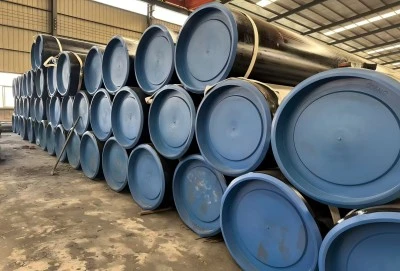When it comes to selecting the right pipes for oil and gas projects, understanding the differences between various standards is crucial. Two commonly referenced standards in the industry are API 5L and ASME B36.10. While both are essential in pipeline construction, they serve different purposes and have distinct characteristics. In this article, we'll explore the key differences between API 5L and ASME B36.10, focusing on their purpose, wall thickness specifications, and testing requirements. We'll also delve into the significance of API 5L line pipe in the industry.
|
|
|
Purpose: Defining the Scope of API 5L and ASME B36.10
API 5L, which stands for American Petroleum Institute Specification 5L, is a standard specifically designed for line pipes used in oil and gas transportation. This specification covers seamless and welded steel line pipes for use in conveying gas, water, and oil in both the oil and natural gas industries. API 5L line pipe is known for its high strength, durability, and resistance to corrosion, making it ideal for long-distance transportation of petroleum products.
On the other hand, ASME B36.10, developed by the American Society of Mechanical Engineers, is a more general standard that covers a wider range of pipe applications. It specifies dimensions of welded and seamless wrought steel pipe for high or low temperatures and pressures. While ASME B36.10 pipes can be used in various industries, including oil and gas, they are not specifically designed for line pipe applications like API 5L.
The key difference in purpose lies in their specialization. API 5L is tailored for line pipe applications in the oil and gas sector, while ASME B36.10 provides a broader standard for various industrial pipe applications. This specialization of API 5L ensures that pipes meeting this standard are optimized for the specific demands of oil and gas transportation, including resistance to high pressures and corrosive environments.
Wall Thickness: Comparing Specifications Between API 5L and ASME B36.10
Wall thickness is a critical factor in pipe selection, as it directly impacts the pipe's strength, pressure-bearing capacity, and overall durability. When comparing API 5L and ASME B36.10, notable differences in wall thickness specifications become apparent.
API 5L provides specific wall thickness requirements for line pipes, which are typically thicker than those specified in ASME B36.10. This increased thickness is crucial for withstanding the high pressures and potentially harsh conditions encountered in oil and gas pipelines. API 5L categorizes pipes into different grades (such as X42, X52, X60, etc.) based on their yield strength, with each grade having its own set of wall thickness specifications.
ASME B36.10, in contrast, offers a more standardized approach to wall thickness. It defines three weight classes for pipes: standard weight (STD), extra strong (XS), and double extra strong (XXS). These classifications provide a range of wall thicknesses for different pipe sizes, but they are not specifically tailored to the demands of line pipe applications.
For instance, an API 5L X60 line pipe might have a thicker wall compared to an ASME B36.10 pipe of the same nominal size and pressure rating. This difference is particularly important in high-pressure applications where the additional wall thickness of API 5L pipes provides an extra margin of safety and durability.
It's worth noting that while API 5L line pipes generally have thicker walls, this doesn't mean ASME B36.10 pipes are inadequate. The choice between the two depends on the specific requirements of the project, including pressure ratings, environmental conditions, and regulatory compliance needs.
Testing Requirements: Ensuring Quality and Safety
The testing requirements for API 5L and ASME B36.10 pipes differ significantly, reflecting their distinct purposes and applications. API 5L, being specific to line pipe for oil and gas transportation, has more rigorous and comprehensive testing protocols.
API 5L mandates a series of tests to ensure the quality and reliability of line pipes. These include:
- Hydrostatic Testing: Each pipe must undergo a hydrostatic test to verify its ability to withstand specified internal pressures without leakage.
- Chemical Composition Analysis: The chemical makeup of the steel is carefully controlled and tested to ensure it meets the specified requirements for strength and corrosion resistance.
- Tensile Testing: This evaluates the pipe's strength and ductility, crucial for withstanding the stresses of installation and operation.
- Impact Testing: Particularly important for pipes used in low-temperature environments, this test assesses the material's toughness and resistance to brittle fracture.
- Non-Destructive Examination (NDE): Methods like ultrasonic testing or radiographic inspection are used to detect any internal defects or flaws in the pipe.
ASME B36.10, while also ensuring quality, has less stringent testing requirements compared to API 5L. The focus in ASME B36.10 is primarily on dimensional accuracy and material composition. While hydrostatic testing may be performed, it's not always mandatory for all ASME B36.10 pipes, unlike in API 5L where it's a requirement for every pipe.
The more comprehensive testing regime for API 5L line pipe reflects the critical nature of its applications. Oil and gas pipelines often operate under high pressures and in challenging environments, making thorough testing essential for safety and reliability. This rigorous testing ensures that API 5L pipes can withstand the demanding conditions of long-distance oil and gas transportation.
It's important to note that while ASME B36.10 pipes may undergo less extensive testing, they are still manufactured to high standards and are suitable for many industrial applications. The choice between API 5L and ASME B36.10 should be based on the specific requirements of the project, considering factors such as operating pressure, environmental conditions, and regulatory compliance.
API 5L Line Pipe For Sale
Understanding the differences between API 5L and ASME B36.10 is crucial for making informed decisions in pipeline projects. API 5L line pipes, with their specialized design for oil and gas transportation, offer superior strength, durability, and safety features. Their thicker walls and rigorous testing requirements make them the preferred choice for critical oil and gas pipeline applications.
LONGMA GROUP adheres strictly to international quality standards and certifications, including API, ISO, and ASTM. Our state-of-the-art manufacturing facilities are equipped with advanced testing equipment and processes to ensure the highest quality and reliability of our products. If you are choosing your API 5L line pipe manufacturers, welcome to contact LONGMA GROUP at info@longma-group.com.














